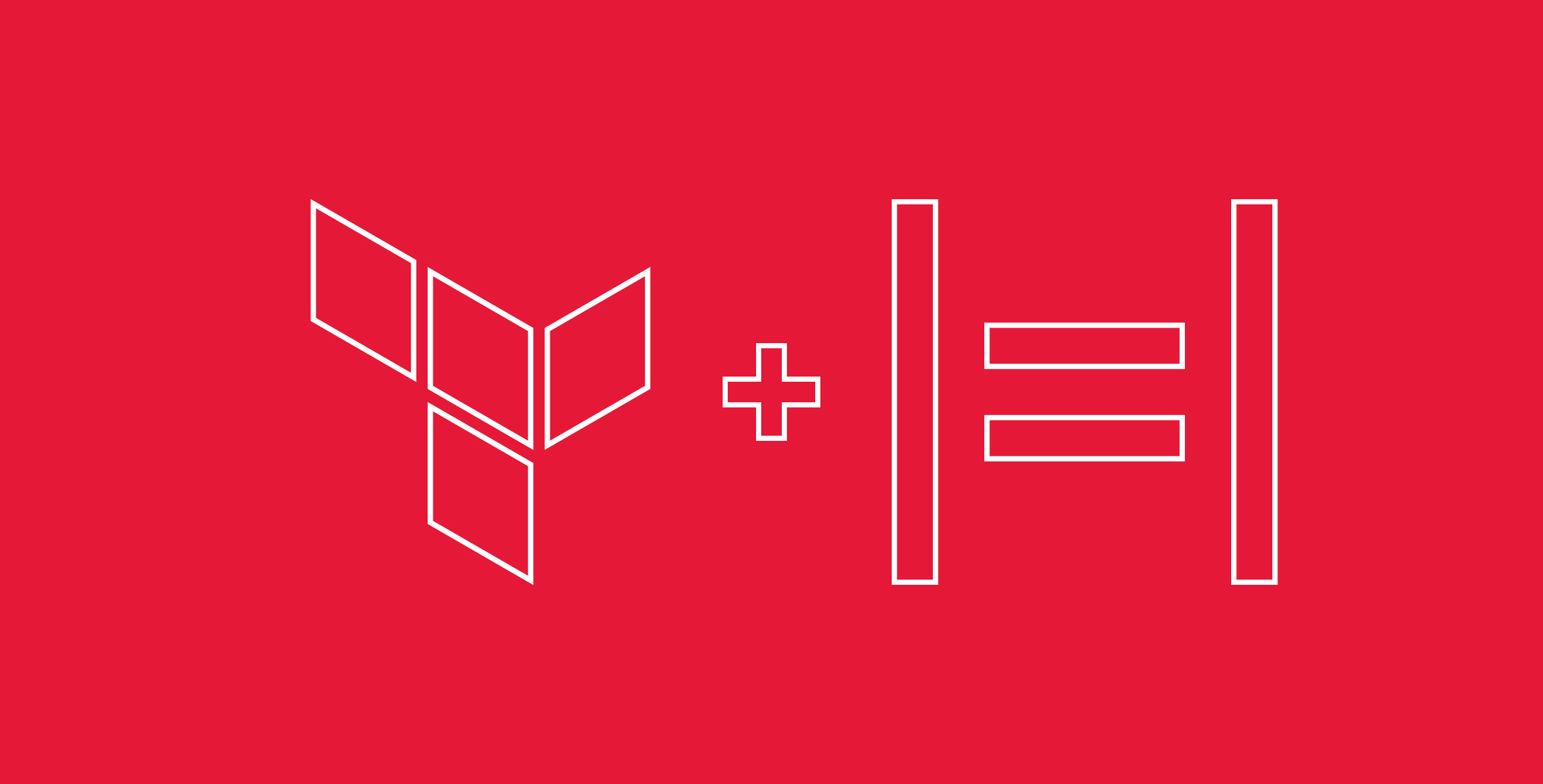
It’s undeniable. IaC tools like Terraform and Ansible are revolutionizing the way we build and interact with large-scale infrastructure. But why? What is Terraform, and what about it makes this tool so essential?
As you may already be aware, it’s become increasingly common for companies to utilize not one cloud solution, but many. For these organizations operating within their hybrid or multi-cloud environments, developing, modifying, and replicating necessary infrastructure can be incredibly difficult. After all, the larger and more complex your system, the harder and more time-consuming it is to make changes.
Managing resource usage across multiple platforms; creating the proper dependencies; utilizing various tools and interfaces. Manually performing these processes not only reduces efficiency, it creates opportunities for human error.
Sure, there are automation tools out there offering great benefits to the organizations that use them. Often though, like the cloud platforms they support, these tools are specific to certain providers and offer no cross-platform functionality.
But, what if you could keep your hybrid cloud environment while utilizing a single method to plan, build, and deploy infrastructure as needed? What if a simple series of code could let you manage your entire system at once? If this sounds like the solution you’ve been waiting for, then Terraform might just be a dream come true.
If you’re a multi-cloud user who isn’t familiar with Terraform and its features, read on to learn how this one tool can revolutionize your development process: saving you time, money, and unnecessary stress.
What is Terraform?

It’s well known that more and more companies are looking to the cloud for their infrastructure needs. After all, there’s a cloud-based solution out there for everything. With more public and private cloud options than ever, it’s not hard to find a provider catering to your company’s specific requirements. However, finding that ideal singular platform that provides everything your organization desires can be tricky or even impossible. This reliance on multiple providers has given rise to hybrid cloud and multi-cloud environments, solutions built to utilize multiple services and tools in conjunction with one another.
Unfortunately, most cloud platforms don’t integrate easily with each other. Why would they? Many of these companies are in direct competition. It’s not in their benefit to build solutions that easily pair with those of their competitors. In the end though, these ingrained differences just make things harder for their users. This is where Terraform comes in.
IaC tools like Terraform and Ansible are revolutionizing the way we build and interact with large-scale infrastructure.
Developed by HashiCorp in 2014, Terraform is a singular tool for creating, modifying, and versioning infrastructure reliably and with minimal risk of error. As a cross-platform tool, it’s capable of managing a wide variety of services including public clouds, Software as a Service (SaaS) tools, and even custom-built in-house solutions.
But, how does Terraform do all of this?
At it’s core, Terraform is what is known as an Infrastructure as Code (IaC) tool. IaC allows users to build infrastructure using high-level syntax. This means virtual environments can be developed utilizing the same methods as any other code.
By writing configuration files using HCL (HashiCorp Configuration Language), users describe to Terraform an intended end goal, including details on available resources and services. Whether it’s the components necessary to run a single application, or a blueprint of the inner-workings of an entire data center, Terraform takes this configuration file and uses it to generate an execution plan. This plan shows a step-by-step process of all changes necessary to achieve the desired result. By modifying their configuration file, users may review and regenerate this plan as needed until an ideal solution is reached.
Once a plan is approved and enacted, Terraform will automatically execute the necessary steps, acting exactly as described in the execution plan. This allows users to achieve the most efficient and effective results with minimal chances for unforeseen consequences.
The Benefits of Infrastructure as Code

While Terraform is unique among IaC tools, it still shares many of the same benefits its peers offer. As a whole, IaC technology affords organizations the ability to codify and automate the development, modification, and replication of infrastructure, as needed. There are multiple benefits that result from this:
Improved Speed
Any time a process can be automated, it improves efficiency. Because IaC allows infrastructure development to be codified, it removes much of the manual input needed to build and modify environments. Once a configuration file is created, an IaC tool can begin executing its instructions immediately. This keeps processes running smoothly while allowing your team to focus on tasks other than infrastructure building.
For especially large and complex systems or those which require frequent replication, this benefit can result in dozens of hours of saved time.
Increased Reliability
Human error is always a risk. Even if your team is the best, people make mistakes. As your infrastructure grows bigger and more interconnected, these risks multiply alongside their potential consequences. For hybrid environments especially, even troubleshooting these issues once they’ve been identified can be challenging.
With IaC though, you can effectively remove much of this associated risk. So long as your end goal is properly identified and your configuration files are correct, your final results will be too.
Greater Collaboration
For large organizations with decentralized structures, it can be very difficult to keep all the elements of your infrastructure identical. As the needs of different departments force necessary changes, your configuration drifts further from its original design. This is especially true when working in hybrid cloud environments.
IaC technology affords organizations the ability to codify and automate the development, modification, and replication of infrastructure, as needed.
One of IaC’s greatest features is its ability to replicate established environments. Once your code is built, it can be easily moved from one user to the next. This allows anyone within your organization to automatically recreate identical instances to use for their own needs. This not only makes scalability easier, it also offers greater opportunity for collaboration between departments.
Easier Testing and Experimentation
As mentioned above, one of the biggest advantages of IaC is the ease of replication it offers. After all, if your environment exists as code, you can create backups and duplicates whenever needed with minimal time and resource consumption. If your development team needs to test a new feature or see the results of a specific change, testing environments can be created and deconstructed quickly. This encourages experimentation and optimization by removing the unnecessary back and forth between departments as developers wait for operations to build the infrastructure they need.
Benefits Unique to Terraform

While the benefits described above apply to IaC solutions as a whole, there are several important advantages unique to Terraform that help it stand out among the competition. Terraform’s specific benefits include:
Execution Plans
One of Terraform’s biggest advantages over other IaC tools is that it splits its development process into two major phases: planning and execution. Once a configuration file has been created, Terraform generates a plan detailing every change it intends to make in order to achieve the results described within the configuration file. However, until this plan is actually executed, no changes are made. This means users have an opportunity to dig through and review the process that is about to occur, ensuring there are no undesired consequences.
Should an issue be found, the original configuration file can be modified and a new plan can be generated. Because the planning phase is much less resource-intensive than the execution phase, it encourages developers to repeat this process as necessary until an ideal solution is reached. Once the perfect plan is ready, it can be executed at any time. This planning phase allows users to rest easy knowing that only those steps detailed within the plan will be taken and no other changes will be made.
Resource Graphs
Part of what makes Terraform so efficient is it’s ability to accurately determine and prioritize dependencies when creating infrastructure. It does this by building something known as a Resource Graph, a chart that outlines the dependencies of interconnected solutions. The benefits of this are twofold:
By determining which resources do and do not depend on each other, Terraform is able to run multiple processes in parallel, simultaneously building non-dependent pieces alongside one another. This greatly reduces overall build-time while still minimizing associated risks.
The second benefit of this resource graph is that it provides users with an outline of the dependencies existing within their infrastructure. This insight can be very useful during planning and development stages, making future changes smoother and giving teams a clearer understanding of the current state of their environment.
Cloud Agnostic
Unlike the majority of IaC solutions, which are built to automate infrastructure development for specific cloud platforms, Terraform is cloud agnostic. This means it can be used alongside any service provider, and more importantly, can integrate multiple services without the need for multiple tools. With over 100 publicly available infrastructure integrations, Terraform can integrate with most public and private cloud technologies. Additionally, it can even manage popular software options such as MySQL and GitHub, control storage and network features, create necessary DNS entries, and more. In this way, Terraform provides a complete method for infrastructure development, addressing and unifying all necessary components into a single, easy to use methodology.
Open Source
Another key advantage of Terraform is its open source status. This carries multiple benefits for users:
First, because it is open source, the standard edition of Terraform is free to use and can be downloaded easily from HashiCorp’s terraform.io website. Publicly available integrations can be added as needed, allowing users to modify Terraform to their needs.
Additionally, the fact that Terraform is open source means it will always remain relevant. With a large community of developers using and customizing the tool constantly, Terraform is always evolving. Unlike other IaC solutions, as the requirements of technology change, new add-ons and features can be easily integrated, keeping Terraform current rather than lagging behind due to a lack of continued support.
Immutable Infrastructure
Most IaC solutions create what’s known as mutable infrastructure. This means the infrastructure can be altered to accommodate changes or updates. While this may seem beneficial, the problem is, it causes the infrastructure to move further and further from the original code that generated it. This issue is known as Configuration Drift. When the infrastructure no longer matches the configuration files used to create it, troubleshooting becomes much more difficult.
What makes Terraform unique in this regard is that it utilizes immutable infrastructure. In other words, the infrastructure created by Terraform cannot be changed. Instead, if a change is made, the current configuration is replaced with a new configuration that directly reflects this change. This means your code always mirrors the current version of your infrastructure. The previous configuration can even be saved as a backup in case a rollback ever becomes necessary.
Terraform Editions
Getting started with Terraform is easy, and thanks to its open source status, you can download the standard edition for free through terraform.io. The standard edition isn’t the only version of Terraform available though, and depending on your needs, the Pro or Premium versions of the tool may prove even more useful.
Terraform Pro comes with everything available within the standard edition, but includes several bonuses otherwise unavailable to standard edition users. Instead of the command-line interface used in standard edition, Pro features a full GUI, making interfacing with the tool even easier. In addition, Pro users gain version control, API access, and a private module registry. Lastly, upgrading to pro gives users access to business hours support through HashiCorp.
Terraform Premium on the other hand, includes everything available within the Pro version but is installed directly onto your own cloud infrastructure. Additional features include SAML single sign in, policy as code, and audit logs of previous changes. With 24×7 gold-level support, you’ll always have access to assistance in the event of the unexpected.
As the requirements of technology change, new add-ons and features can be easily integrated, keeping Terraform current.
Terraform vs. Ansible

One of Terraform’s biggest competitors is Ansible, a configuration management tool developed and sold by Red Hat. Like Terraform, Ansible is an open source, cloud-agnostic, IaC solution. It supports a robust community of users and has been around since 2012, making it slightly older than Terraform. While technically these tools are intended for two separate purposes, there is a great deal of overlap between their functionalities.
At their core, the biggest difference between these two tools comes down to their end goals. Terraform is classified as an Orchestration tool. It uses a configuration file to build an environment and then ensures that environment remains in its desired state. If something isn’t functioning properly, the system is automatically restored to its designated configuration upon reload. For environments that require consistency, Terraform is an ideal solution.
Ansible on the other hand is what is known as a Configuration Management tool. Unlike an orchestration tool which is concerned only with the status of the overall environment, configuration management tools are more focused on the individual pieces that make up the whole. Unlike Terraform, Ansible can configure each instrument within an environment, ensuring they are operating optimally. If something breaks, rather than reloading the entire infrastructure, Ansible will attempt to fix the broken pieces. Should a piece prove unfixable, Ansible does have the ability to replace infrastructure, making it a hybrid of both orchestration and configuration management.
The other major distinction between Terraform and Ansible lies in the difference between declarative and procedural methodologies. Terraform is entirely declarative, while Ansible is mostly procedural. What this difference means is, unlike Terraform, which generates its execution plans automatically, with Ansible, users specify the precise methods they’d like used when provisioning infrastructure changes. The result is a greater level of control over each step. However, this also makes the process more demanding, requiring a higher degree of manual input.
The tradeoff with procedural management tools like Ansible is, rather than telling the tool what you’d like to end up with, you must instead tell it what changes you’d like it to make. This distinction may seem subtle in the early days of a project, but as your infrastructure grows and changes, this difference becomes increasingly obvious.
For example, let’s say you have 10 virtual servers within your infrastructure all running various applications. Your infrastructure needs are growing, and you’d like to double your available servers to 20. With Terraform, you’d write a declarative configuration file, place the number of servers at 20, and run the execution plan.
However, with Ansible, if you ran a procedural version of the same request, you’d end up with 30 servers instead. This is because with Ansible you are telling it what you’d like it to do: “add 20 servers.” The tool then does this without taking the current status of your infrastructure into account. If you had 0 servers, you’d end up with 20, but if you’re starting with 10 already, you’ll end up with 10 + another 20.
While this is a simplified example, it shows how Ansible requires users to be more aware of the change history of their infrastructure when issuing commands. As more and more changes are added, the risk of error increases, because there is more information that a user must be aware of before making changes.
Unlike Terraform, which generates its execution plans automatically, with Ansible, users specify the precise methods they’d like used when provisioning infrastructure changes.
With Terraform, you are telling the tool what your end goal is, and allowing it to handle the rest. If you want 20 servers and you already have 10, it’ll add 10 to bring you up to 20. If you already had more than 20, it would remove excess servers to bring you back down to 20. This minimizes the chance of unforeseen errors, because it allows the program to handle the details. Any changes that will be made are listed out in the execution plan and can be reviewed before activating. This also makes Terraform’s code much more reusable, as the same configuration files can be modified slightly and then reused to achieve the desired results every time.
In the end though, both tools offer users greater control, reduced risk, and increased automation. Depending on the requirements of your environment, it is likely one of these tools will prove more suited to your needs than the other. However, whether you choose Terraform, Ansible, or one of the other popular IaC solutions, including Chef, Puppet, or SaltStack, what matters is the benefits they can offer you and your specific environment.
Terraform and Hivelocity

With the introduction of our new REST API, Hivelocity customers can now interact directly with their servers via the OpenAPI specification. With all the features of our MyVelocity control panel and the ability to deploy new configurations instantly, our public API brings customers an even greater level of convenience. By combining this with our new cloud-init and post install script support, our users can now initialize and auto-configure new physical machines as easily as virtual instances. For those who utilize IaC solutions such as Terraform and Ansible though, this ease-of-use can be taken even further.
Now available in a supported alpha release, by integrating Terraform with the Hivelocity API, users can now include the deployment of instant bare-metal servers into the automation of their hybrid cloud environments. If a change requires users to expand their physical resources, this can be included into Terraform’s execution plan, further integrating your cloud and bare-metal solutions into a more unified infrastructure.
To learn more about our public API, check out our API Quickstart page, or call or chat with a sales agent. Our experts are ready to help answer your questions today!
So, if you’re a hybrid cloud user managing multiple integrated cloud and bare-metal solutions, there’s never been a better time to see what Terraform can do for you and your company. Automate deployment, reduce risk, and increase efficiency. With Terraform and the Hivelocity API, upgrading your hybrid cloud infrastructure is easy.
– Sean Kelly


